DevOps Strategies and Best Practices
By Alex Carter on March 21, 2025
Implementing DevOps helps organizations improve software development by increasing efficiency, improving workflows, and enhancing collaboration between teams. By integrating development and operations, DevOps enables faster releases, better system reliability, and reduced operational bottlenecks.
Why DevOps Matters for Organizations
Adopting DevOps requires significant changes to business structures and processes, but the benefits make it a worthwhile investment. In the 2020 DevOps Trends survey, 99% of respondents reported a positive impact on their organization after implementing DevOps practices.
The 2019 State of DevOps report by DORA highlighted the advantages of high-performing DevOps teams. These teams deploy software 208 times more frequently and 106 times faster than low-performing teams. Beyond speed, DevOps also enhances software quality, with elite teams experiencing a seven times lower change failure rate compared to less efficient teams.
Essential DevOps Practices for Effective Implementation
Implementing DevOps successfully requires following key practices that improve collaboration, efficiency, and software quality.
Encourage Collaboration and Communication
Strong communication and effective collaboration are fundamental to DevOps success. Developers, operations personnel, and quality assurance teams must take responsibility for their roles while ensuring open and transparent communication. Instead of placing blame, mistakes should be treated as learning experiences that drive continuous improvement. Conducting postmortem analyses allows teams to uncover root causes of incidents and implement proactive measures to prevent recurrence, fostering a culture of accountability and growth.
Ensure Continuous Feedback
Providing ongoing feedback helps teams make informed decisions and address issues quickly. Developers should receive immediate alerts for pipeline failures, and thorough test results should be readily available. Product management teams should be notified of production failures, performance issues, or reported bugs. Continuous feedback allows teams to balance speed and quality without compromising either.
Implement Continuous Integration
Continuous Integration (CI) involves developers frequently committing code changes to a shared repository, often multiple times a day. This practice helps identify and resolve issues early in the development process.
The Continuous Integration (CI) process ensures that new code integrates properly with existing code through automated builds. Automated testing is also used to detect errors early, helping maintain software stability and functionality.
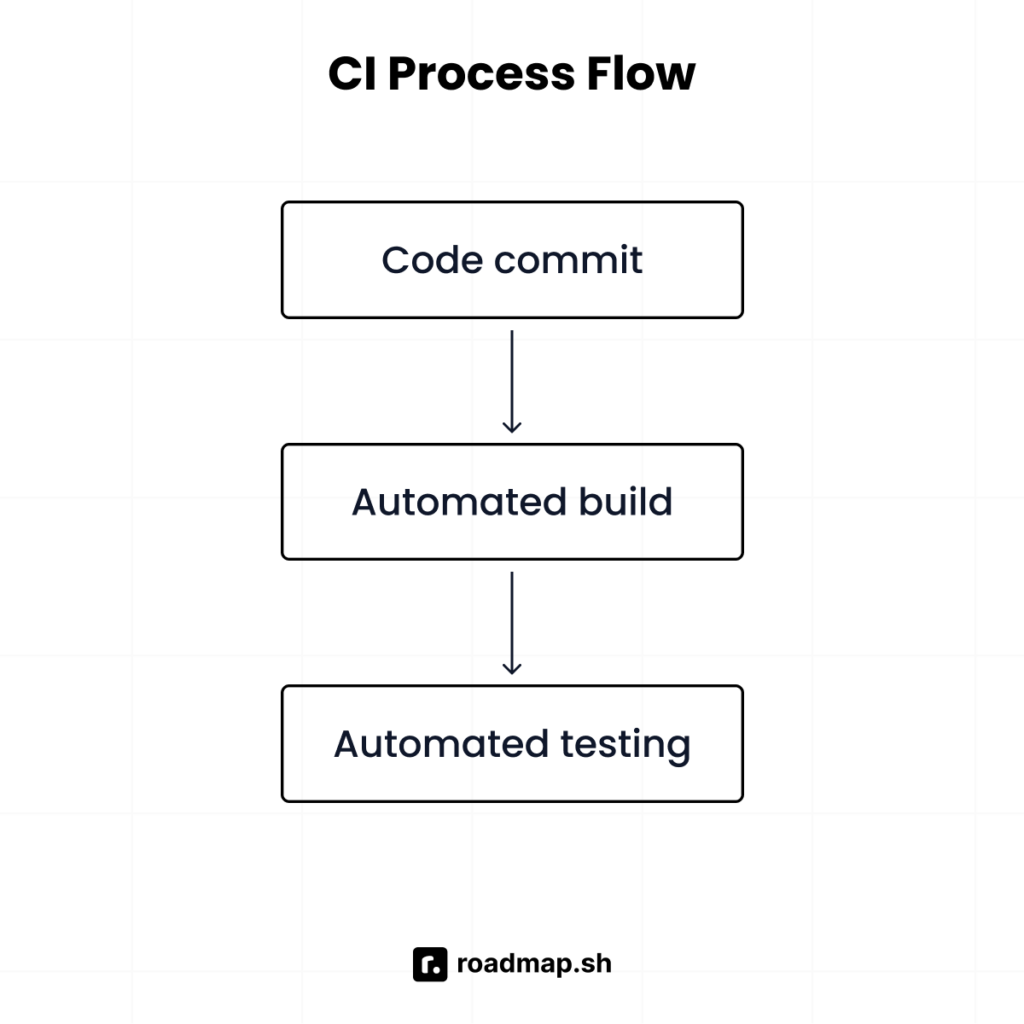
To keep the CI process effective, teams should commit small and incremental changes frequently, ensuring that updates are manageable. Automating the build process helps maintain consistency across development stages. Running tests with every commit allows teams to catch issues early and address them before deployment.
If a build fails, fixing it immediately prevents disruptions in the development pipeline. Using a version control system like Git helps manage changes and deployments efficiently. Documenting the CI process ensures that the team can work effectively and that new members can onboard quickly.
Automating Code Deployment with Continuous Delivery
Continuous Delivery (CD) automates the final stages of software deployment, ensuring tested code is always ready for release. By extending Continuous Integration (CI), CD minimizes manual effort, speeds up updates, and enhances deployment reliability.
To implement CD effectively:
- Automate deployments to reduce errors and maintain consistency;
- Use Git for version control to track all code and infrastructure changes;
- Monitor application performance with real-time logging and error tracking;
- Enable rollback mechanisms for quick recovery from failures;
- Implement feature flags for controlled releases without system-wide impact;
- Integrate security scanning to detect vulnerabilities before deployment.
Managing Infrastructure with Infrastructure as Code (IaC)
Infrastructure as Code (IaC) automates the provisioning of infrastructure by replacing manual configurations with machine-readable scripts, such as JSON or specialized coding frameworks. This method enhances deployment speed, minimizes errors, and ensures a consistent environment across systems.
Version control systems like Git enable teams to track changes, collaborate efficiently, and revert configurations when necessary. Structuring IaC into modular components improves maintainability, while thorough testing ensures system stability. Security is reinforced by managing sensitive information through environment variables, and integrating IaC within CI/CD pipelines optimizes workflow efficiency.
Research from the State of DevOps Report indicates that IaC enhances performance by 30%, leading to better resource allocation and improved operational effectiveness. Implementing best practices simplifies infrastructure management, making deployments more scalable and resilient.
Implementing Microservices Architecture
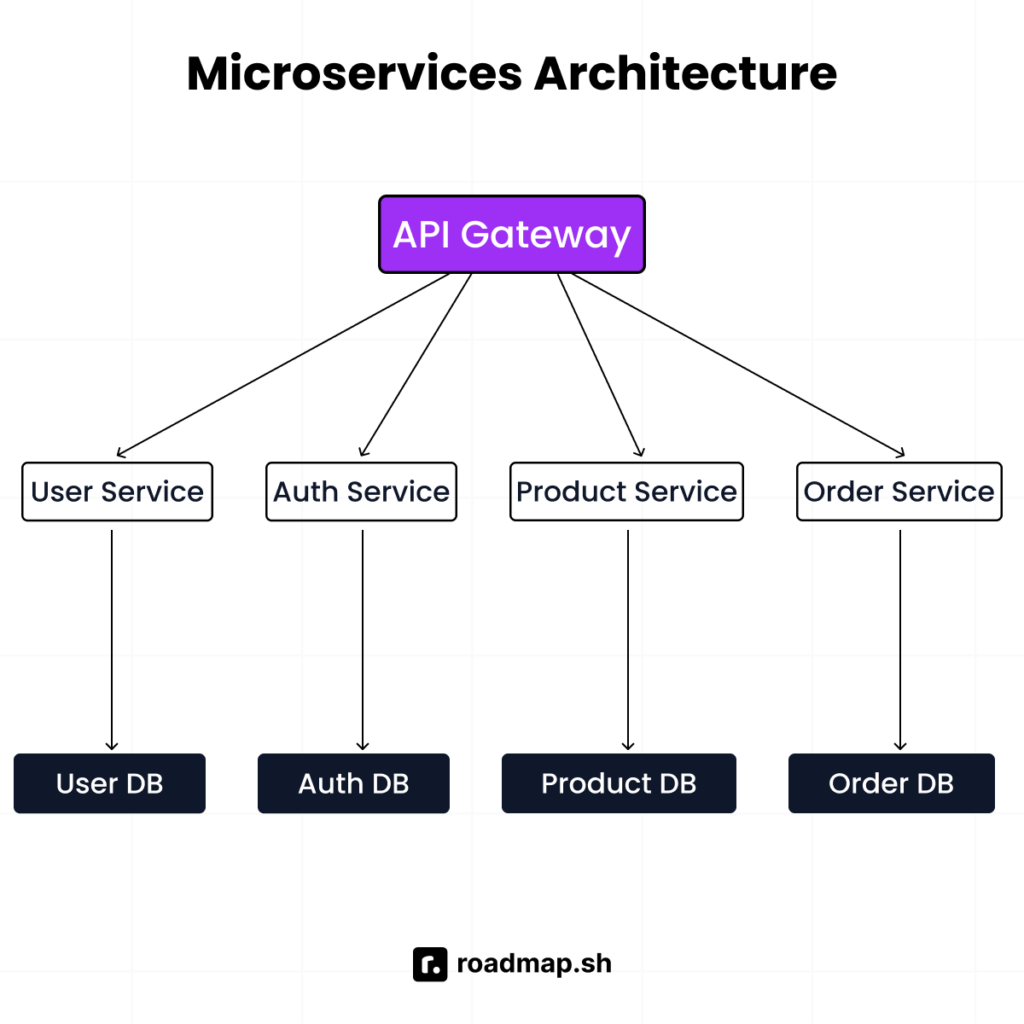
Microservices architecture structures applications as independent, modular services, each handling a specific function. This design enhances scalability, fault isolation, and deployment flexibility within a DevOps framework. By enabling independent development and testing, teams can iterate faster, optimize resources, and maintain system stability without disruptions.
To effectively implement microservices:
- Incorporate retries, circuit breakers, and fallback mechanisms to handle failures;
- Ensure each microservice manages its own database to prevent tight coupling;
- Use containerization and orchestration tools like Docker and Kubernetes for deployment management;
- Implement a CI/CD pipeline to enable consistent and reliable updates for individual services;
- To reduce dependencies and promote communication between services, use message brokers such as RabbitMQ or Kafka.
Using Version Control for Efficient Collaboration
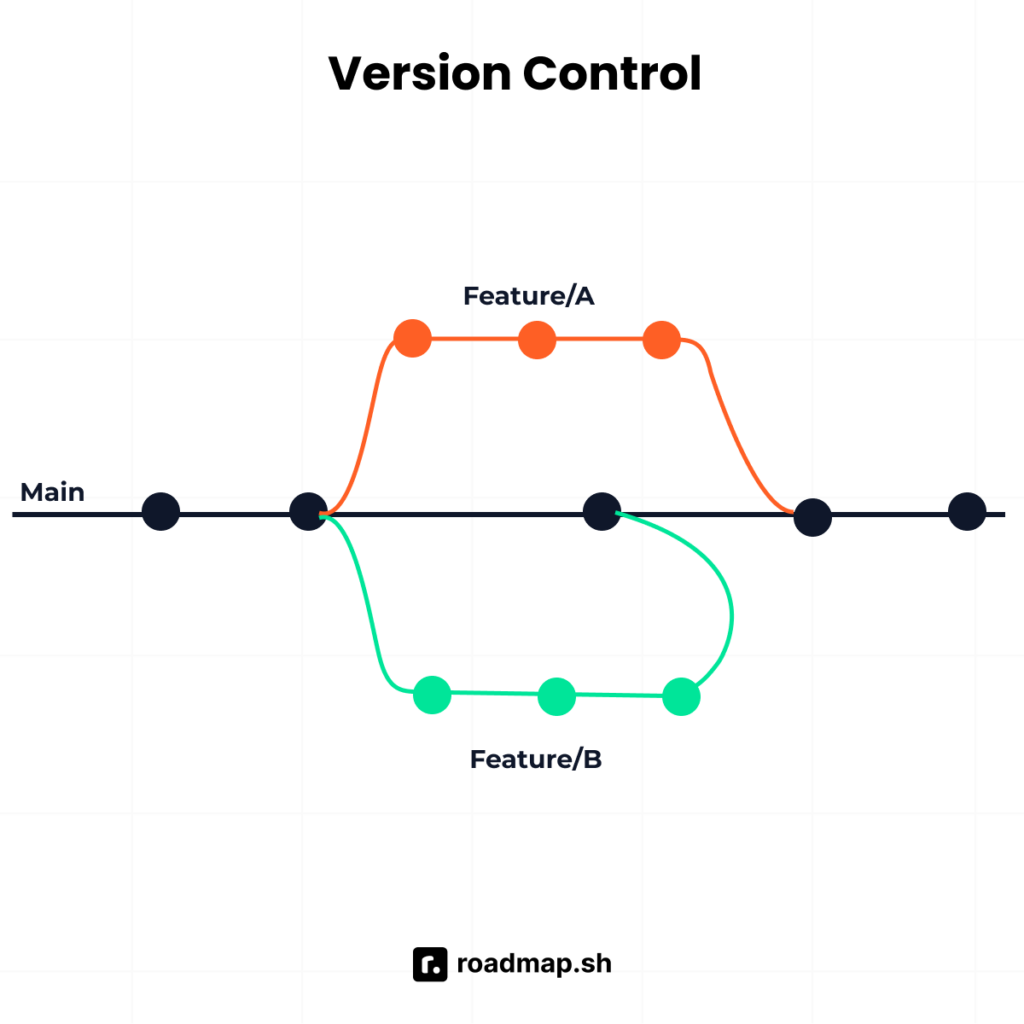
Version control helps teams manage code efficiently and collaborate effectively by tracking changes to files over time. Git is commonly used in DevOps to maintain structured workflows and monitor development progress.
To use version control effectively, teams should implement branching strategies such as feature branching and Git flow to organize development. Frequent commits with clear and descriptive messages improve tracking and understanding of changes. Pull requests facilitate code reviews and strengthen collaboration between development and operations teams.
Keeping repositories clean by avoiding unnecessary files like binaries, logs, and dependencies ensures better organization. Tagging releases with version numbers helps track significant updates, while meaningful branch names improve clarity and make it easier for team members to understand the codebase.
Continuous Monitoring and Observability
Monitoring provides real-time insights into system performance, helping detect outages, bottlenecks, and resource constraints. Observability takes this further by analyzing logs, metrics, and traces to uncover patterns and diagnose underlying issues.
To build an effective monitoring and observability framework:
- Set clear performance benchmarks with SLAs and SLOs;
- Track critical metrics such as uptime, error rates, latency, and CPU usage;
- Use visualization tools like Grafana and Kibana for real-time insights;
- Centralize data for easier access, analysis, and issue resolution.
A well-structured approach improves system stability, accelerates troubleshooting, and ensures optimal performance.
Configuration Management for System Consistency
Configuration management ensures that system settings, dependencies, and infrastructure components remain consistent and controlled. It helps prevent errors and reduces downtime by standardizing configurations across environments.
To apply configuration management effectively:
- Automate configuration processes, including application setup, service management, and server deployment;
- Use Git for centralized storage and version control of configurations, making it easier to track changes and revert when needed;
- Write modular configuration files that can be reused across different environments to improve efficiency;
- Maintain documentation for all configurations to ensure clarity and accessibility for team members.
Integrating Security with DevSecOps
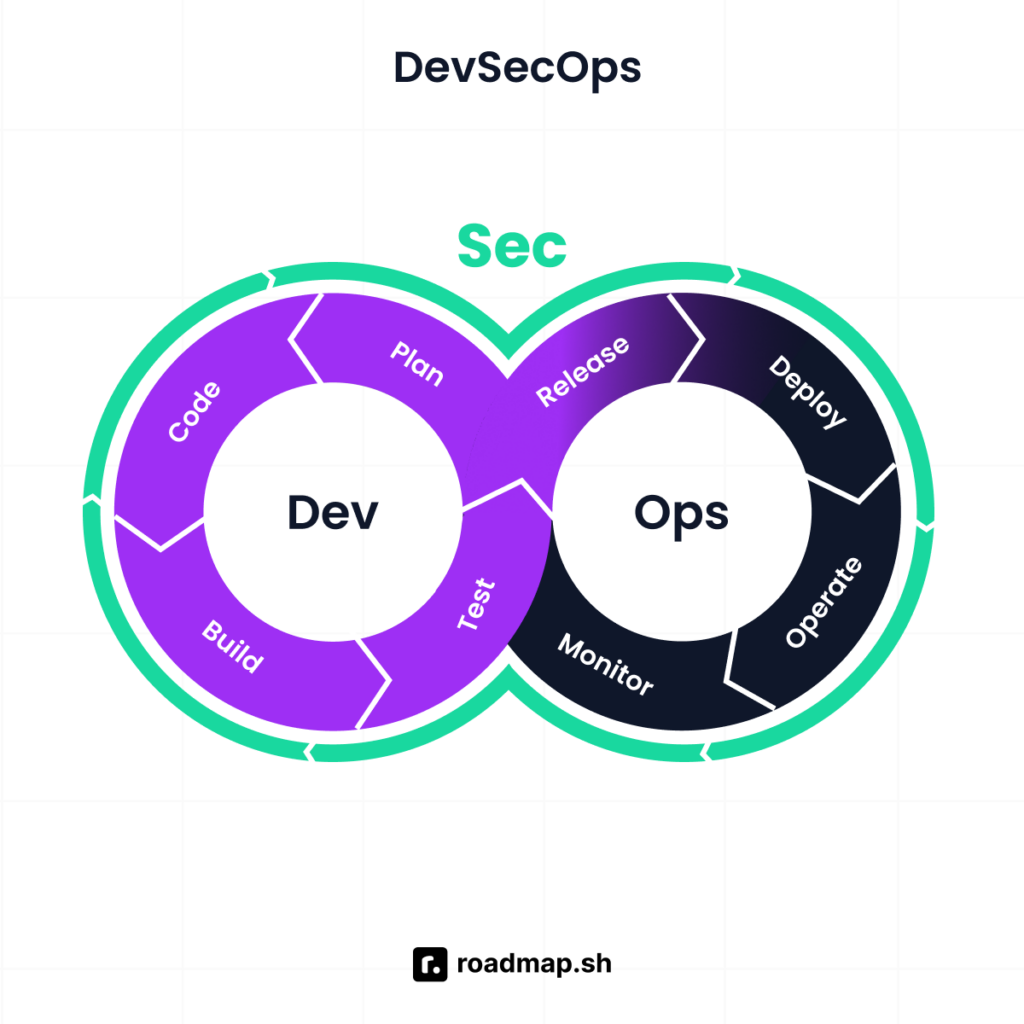
DevSecOps embeds security at every stage of the software development lifecycle, proactively identifying vulnerabilities instead of handling them later. Unlike conventional security assessments conducted near the end of development, this approach reduces risks, accelerates deployments, and strengthens software reliability.
Selecting the Right DevOps Tools
Choosing the right DevOps tools is essential for optimizing development, deployment, and infrastructure management. Since the field of DevOps is always changing, teams should consider factors such as ease of use, compatibility with existing workflows, and organizational goals before adopting tools.
To optimize development workflows and ensure efficiency, consider these key tool categories:
- CI/CD Automation – Simplify integration and deployment with Jenkins, GitLab CI/CD, CircleCI, Azure Pipelines, and GitHub Actions;
- Infrastructure as Code (IaC) – Automate provisioning with Terraform, Ansible, Pulumi, Chef, AWS CloudFormation, and Vagrant;
- Containerization & Orchestration – Deploy and manage containers using Docker, Kubernetes, OpenShift, Docker Swarm, and Amazon ECS;
- Monitoring & Logging – Track system performance with Prometheus, ELK Stack, Datadog, Splunk, and Grafana;
- Configuration Management – Maintain system consistency with Chef, Puppet, CFEngine, SaltStack, and Ansible;
- Security & Compliance – Strengthen security with HashiCorp Vault, OWASP ZAP, Snyk, SonarQube, and Aqua Security;
- Collaboration & Communication – Improve team coordination with Slack, Microsoft Teams, Trello, Jira, and Confluence.
Selecting and integrating the right tools ensures smoother DevOps processes, enhances security, and improves overall efficiency.
Maintaining Quality While Ensuring Speed
Speed and quality are both important in DevOps, but focusing only on speed can lead to bugs, security risks, and unstable systems. Many DevOps metrics measure deployment speed, which can result in rushed releases if quality is not properly managed.
To maintain high standards while meeting delivery goals, teams should include continuous testing in the CI/CD pipeline to catch issues early. Developers should be responsible for their code and follow quality control measures. Implementing checkpoints such as code reviews, automated tests, and coding standards before deployment helps ensure stable and reliable software.
Managing Features with Feature Flags
Feature flags, also called feature toggles, allow teams to enable or disable application features without modifying or redeploying code. This approach gives greater control over which features are active in a production environment.
Teams can use feature flags to release new features gradually, allowing them to monitor performance and collect user feedback before a full rollout. They also help deploy features safely, as teams can quickly disable them if issues occur. Additionally, feature flags support A/B testing by enabling comparisons between different feature versions, helping optimize functionality based on real-time data.
Implementing Agile Project Management
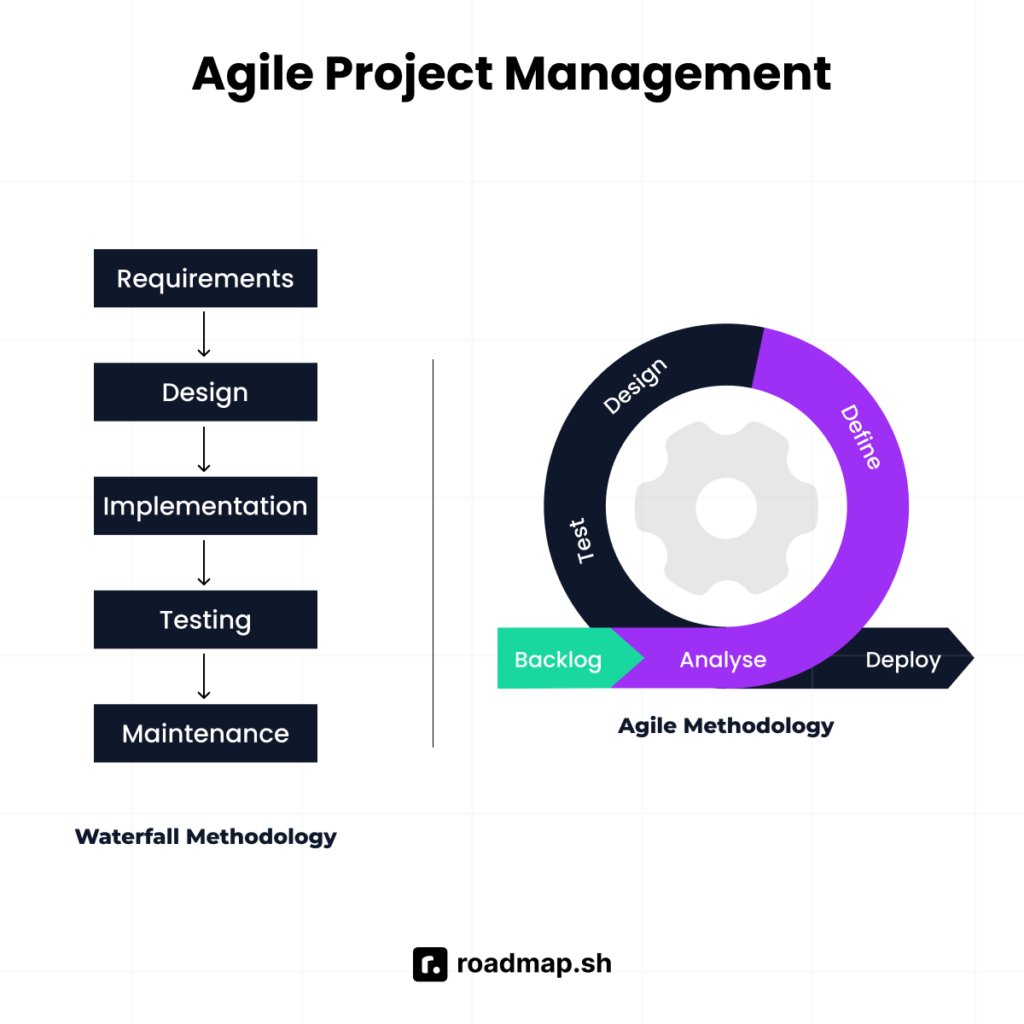
Agile project management follows an iterative methodology, enabling teams to develop software in smaller, controlled phases rather than waiting for a single extensive release. This approach emphasizes ongoing progress assessment, ensuring adaptability based on feedback and evolving needs.
Core principles of Agile project management revolve around structuring workflows into four key stages: tasks to be started, active development, code assessment, and completion. This methodology prioritizes breaking down complex projects into smaller, trackable components while maintaining flexibility for scope adjustments. Frameworks such as Scrum and Kanban are commonly utilized to organize, monitor, and evaluate incremental development efficiently.
Addressing Common Challenges in DevOps Implementation
Overcoming Resistance to DevOps Adoption
A common challenge in DevOps adoption is cultural resistance. Teams may be reluctant to change their workflows or may not fully understand the benefits of DevOps practices. To address this, organizations need to communicate the advantages clearly, such as faster releases, improved software quality, increased flexibility, and better collaboration.
Securing stakeholder buy-in at all levels is essential. A practical approach is to start with small pilot projects, demonstrating the effectiveness of DevOps practices before expanding them across the organization. As teams see positive results, wider adoption becomes more manageable.
Managing Tool Overload and Integration Challenges
The increasing number of DevOps tools can create complexity, making integration difficult. It is important to manage tool usage effectively by selecting solutions that integrate well with existing workflows. Platform engineering addresses this issue by providing developer self-service portals, which centralize essential tools, improve efficiency, and simplify workflows. This approach allows DevOps teams to manage tools without overloading engineers with multiple interfaces.
Scaling DevOps Across an Organization
Expanding DevOps practices across an organization requires standardization and well-defined workflows. Automated testing, version control, and continuous feedback loops help maintain consistency across teams. Platform engineering further supports scalability by providing developers with centralized environments for deploying resources independently, improving collaboration, and accelerating development cycles.
Ensuring scalability also requires reliable data protection. Solutions like Kubernetes-native backups help safeguard critical DevOps assets, including CI/CD pipeline data, application configurations, and persistent volumes. This ensures that as teams grow, their data remains secure and easily recoverable.
Common DevOps Anti-Patterns and How to Avoid Them
While DevOps has improved the efficiency and scalability of software development, certain practices can undermine its effectiveness. These anti-patterns lead to inefficiencies, poor collaboration, and unreliable systems. Avoiding them ensures a more effective DevOps implementation.
Automating Without Understanding the Process
Automation is a key part of DevOps, but automating everything without fully understanding workflows can lead to inefficiencies, incorrect implementations, and system errors. Before automating a process, teams should analyze its value, ensure its necessity, and regularly review automated workflows to confirm they remain beneficial.
Treating DevOps as a One-Time Project
Many teams approach DevOps as a project with fixed timelines instead of an ongoing process. This mindset limits long-term improvements and prevents organizations from fully realizing its benefits. DevOps should be continuously evaluated, with teams encouraged to refine workflows and experiment with new optimizations.
Lack of Monitoring and Feedback Loops
Without proper monitoring and feedback, identifying performance issues, failures, and user experience problems becomes difficult. This can lead to slow issue resolution and missed opportunities for improvement. Implementing end-to-end monitoring and establishing a structured feedback system ensures that issues are detected and addressed promptly.
Isolating the DevOps Team
Some organizations separate DevOps teams from other departments, assigning them sole responsibility for DevOps-related tasks. This approach contradicts the core principle of cross-functional collaboration and creates communication gaps. Instead, DevOps should be integrated across all teams, with shared responsibilities to improve alignment and efficiency.
Over-Reliance on Tools
Using the latest DevOps tools does not guarantee success. Without proper processes and collaboration, tools alone cannot solve workflow inefficiencies. Organizations should first establish effective communication and workflow improvements before selecting tools that align with their needs.
Excessive Use of Feature Flags
Feature flags allow teams to enable or disable features dynamically, but excessive use can clutter the codebase and make maintenance difficult. Teams should clean up unused feature flags regularly to reduce technical debt and keep the code manageable.
Overcomplicating the CI/CD Pipeline
A CI/CD pipeline with too many steps and complex workflows can slow down deployments and make troubleshooting more difficult. Teams should simplify pipelines by focusing on essential steps like build, test, and deploy, adding additional stages only when necessary.
Not Defining Success Metrics
Without measurable goals, it is difficult to assess the effectiveness of DevOps practices. Teams should establish Key Performance Indicators (KPIs) such as deployment frequency, change lead time, and mean time to recovery (MTTR) to track progress and demonstrate the impact of DevOps initiatives.
Conclusion
Implementing DevOps strategies improves software development, collaboration, and system reliability. By integrating CI/CD, automation, and monitoring, teams can reduce inefficiencies and speed up deployments. Success depends on using the right processes, clear communication, and continuous optimization. Avoiding pitfalls like complex pipelines or isolated DevOps teams leads to long-term improvements.
Prioritizing automation, security, and scalability helps organizations adapt to changing needs. Following structured DevOps practices enhances system resilience, software quality, and development efficiency.
Posted in blog, Web Applications
Alex Carter
Alex Carter is a cybersecurity enthusiast and tech writer with a passion for online privacy, website performance, and digital security. With years of experience in web monitoring and threat prevention, Alex simplifies complex topics to help businesses and developers safeguard their online presence. When not exploring the latest in cybersecurity, Alex enjoys testing new tech tools and sharing insights on best practices for a secure web.
